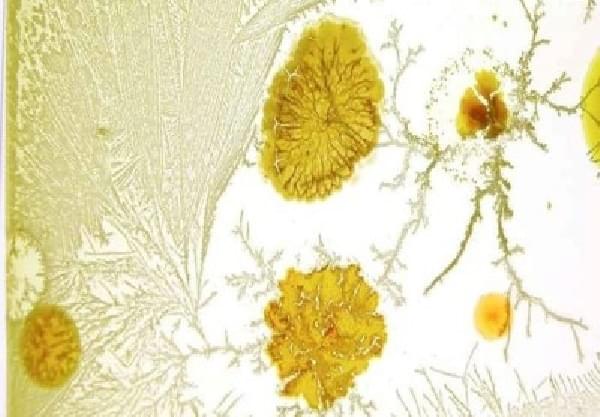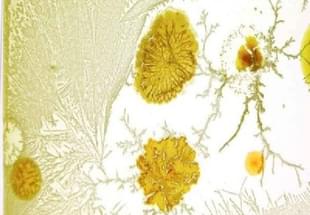Magazine
The Art Of Synthetic Bio
Shanthu Shantharam
Feb 11, 2016, 09:46 PM | Updated 06:33 PM IST
Save & read from anywhere!
Bookmark stories for easy access on any device or the Swarajya app.


Artists are now interested in synthetic biology to use cellular images to depict the inner workings of living organisms. They are also raising questions about what synthetic biologists should do or should not do.
Bio-art is a new discipline of the art of depicting varying manifestations of what is really possible with synthetic biology, a brand new field of modern biology. Synthetic biology started in the early 2000s when Craig Venter and his colleagues showed for the first time that they could assemble a new, though primitive bacterial cell by using cellular spare parts. The idea of synthetic biology as the name itself suggests is the ability to create a new organism either similar or identical to one that exists, or even a hitherto non-existent organism with unique properties.
This is asking to alter life not just at the genetic level, but at the cellular and organismic levels. Synthetic biology has also created new ways of creating modern medicines and machines, and even the very make-up of life as we know it. As much as this prospect excites a scientist, it also throws open limitless opportunities to do what was something not even imaginable all these years. It also raises the spectre of humans playing God and disturbing nature in possibly many irreversible ways. Such changes or modifications are bound to have discernible timely and spatial impacts on our world.
This worries a whole lot of people. For example, the latest technique of gene editing, scientists themselves have declared at a meeting of the US National Academy of Sciences in December 2015, should not be used on human embryos as some Chinese scientists had attempted earlier in the year.
It should be remembered that it was a group of scientists gathered at the Asilomar Conference Center in California in 1975 who imposed a voluntary code of conduct in dealing with the gene splicing technology or rDNA technology that resulted in the world famous National Institute of Health (NIH) rDNA voluntary guidelines that are followed throughout the world. This is the most responsible way of dealing with the organisms created by those technologies. Once non-scientists got involved, the rDNA technology came under the grips of people who were politically motivated, and the whole field became politicized beyond repair.

The voluntary code of conduct helped the growth and use of gene-splicing technology for the welfare of mankind in responsible ways. Politically motivated activists have been trying it kill the technology by strangulating it with needless regulations. A case in point is the GM crops imbroglio in India.
Lately, artists have become interested in synthetic biology to use cellular and organismic images to depict the inner workings of living organisms. Artists are also raising questions about what synthetic biologists should do or should not do. A great convergence of thoughts and ideas, but it also seems like the beginnings of a putative anti-synthetic biology movement. In fact, anti-tech activist groups have already rung the bell and have warned scientists that their subject will come under stringent regulatory scrutiny. The same goes for nano-biotechnology as well.
Howard Boland, with a background in mathematics and computers, got intrigued by the possibilities of Bio-Art where artists can use living material like selectively bred plants, genetically modified bacteria. Boland attempted to control the living organisms directly, and joined the laboratory of Mark Clements at the University of Westminster in London and started to learn how to manipulate living organisms at the genetic level. Boland started to directly illustrate biological processes using these living material he had created.
He created a machine called “Stress-o-stat” in which he grew bacteria in a nutrient broth until all of it was exhausted and bacteria started dying off. He was able to visibly show how bacteria die in a flask. He had used a bacteria that contained an engineered catalase gene tagged with a fluorescent protein that lights up due to stress of nutrient starvation. The experiment was so designed for the engineered bacteria to shuttle between dullness and glow alternately due to starvation or infusion of the nutrient broth. He wanted to exhibit this art form in the office of The Guardian newspaper, but the paper did not give permission.
In Rewilding with Synthetic Biology Alexandra Ginsberg, another bio-artist created a forest with synthetic organisms that can remediate and sustain a forest ecosystem. She also created another art form (Mobile Bioremediation Unit) in which a synthetic mollusc-like organism changes soil pH with alkali hygroscopic fluid, until a genetic kill-switch ends its service at 28 days.
Boland continues to develop a variety of bio-art creations. In Transient images, he shows how bacteria can depolarize dye molecules and turn them colourless. He took bacteria from London’s sewer system and put them in bottles filled with different coloured dyes. As the colour of the dyes started to disappear, Boland’s own image appeared before disappearing completely once all the dyes were discoloured. Boland had effectively used bacteria as “paint brushes”. Boland had a one-man show of his bio-art in April 2013 at the Royal Institute of Great Britain in London. He seems hopeful that the fear and anxiety of genetically modified organisms in the public mind can be erased when large numbers of viewers come to experience such art forms. That might still be wishful thinking, considering the deep-rooted animosity of anti-technology activists toward GMOs.
The brave world of synthetic biology has thrown open a variety of possibilities in art. Pablo Schyfter, a social scientist at the University of Edinburgh, wonders how scientists throw around words like “design”, but fail to address critical questions. For example: why are we using a particular synthetic material, or why do living organisms make a useful artists’ tool? Schyfter and his colleagues have set up a Synthetic Aesthetics project in 2010, funded by the National Science Foundation and the Physical Sciences Research Council whose mission is to examine the relations between art, design and synthetic biology, providing a starting point for discussion and debate. Six pairs of biologists and artists were set up to explore the relations questions for two weeks in a laboratory and two weeks in an art studio.
A pair of a scientist and an artist interested in the sense of smell in which people either like the smell or abhor it were brought together. They cultured cheeses with a normal cheese bacteria and another bacteria from the body of Michael Pollan, a renowned author on foods, at the Dublin Science Gallery in 2013 and 2014. People did not take to the cheese made from the bacteria of Michael Pollan’s body, though there was no difference in the modes of action of both bacteria. This must be due to a justified human cultural trait of feeling that anything that comes out of a human body is dirty, smelly and unhygienic.
Another pair of an architect and a scientist used a computer model of xylem cells that are the normal parts of plant anatomy. They did not try to replicate Nature exactly, allowing natural evolution to devise forms that are otherwise challenging to imagine. This project has not been completed.
Designers at SymbioticA, “artistic laboratory” at the University of Western Australia in Perth, synthesized a tiny jacket out of mouse cells, which was exhibited at the Museum of Modern art (MOMA) in New York by calling it “victimless leather” as a part of a show called Design and the Elastic Mind.
Alexandra Ginsberg, the designer bio-artist says that bio-art opens up all sorts of possibilities of looking at science through a cultural perspective. Schyfter says that bio-art has made synthetic biologists think of “design” more critically and carefully so that the public will not develop needless and baseless apprehensions, and anxieties about custom designing of life forms. Ginsberg is pursuing a doctorate in design interactions at the Royal College of Art in London She has conceived the project Designing for the Sixth Extinction, trying to address the far-reaching implications of synthetic biology in the context of human-triggered mass extinction (apocalypse) that some believe is more than likely to happen.
Ginsberg was intrigued by discussions between conservationists and synthetic biologists at a Wildlife Conservation Society meeting in Cambridge in 2013. The questions being argued about were to do with how would one fit a newly synthesized organism in the natural order of living beings and how would one feel walking in a forest where man-made critters would be crawling around. Would one call man-made critters living organisms or living machines? Ginsberg, inspired by discussions with conservation scientists, constructed a 3D Mobile Bioremediation Unit that remedies polluted acidic soils and a porcupine-shaped Autonomous Seed Disperser that disperses seeds all over. Multiple editions of Designing for the Sixth Extinction are on exhibit until early to mid 2016 in London’s Design Museum and Karlsruhe’s Center for Art and Media, and at the Cooper Hewitt, Smithsonian Design Museum in New York City.
Bio-engineer Drew Endy of Stanford feels that synthetic biologists need people like Ginsberg to critically think about the broad consequences of their cutting-edge creations. He feels that projects like Synthetic Aesthetics are not idle musings, since genetically engineered mosquitoes to eradicate disease-causing mosquitoes from Nature have already been tested and commercialized.
If India’s GEAC (Genetic Engineering Approval Committee) approves the GM mosquito, the country has a very good chance of eradicating dengue and malaria-causing mosquitoes, a sure shot way to eradicate the diseases.
Soil microbiologists have developed oil-eating and soil-cleaning bacteria for decades now. India-born microbiologist Ananda Chakraborty was the first to patent an oil-eating bacterium in a landmark case adjudicated by the Supreme Court of USA.
The recently developed gene editing technology opens up limitless opportunities to design, alter and newly create life forms that are already a subject of deep discussion and debate.
The most fundamental questions like what might scientists design or what they should design, and then who decides on such questions are still wracking the brains of scientists, policy makers, and bioethicists. But, the reality is that science, culture, and religion have always co-existed, but in separate silos. Now it seems to be an opportunity for all of them to infuse one another’s turfs to make a better world for us.
Dr Shantharam is an Adjunct Professor of Biotechnology, University of Maryland—Eastern Shore, Princess Anne. A former biotechnology regulator with the United States Department of Agriculture, served as a biotechnology consultant with the World Bank, Asian Development Bank, UNIDO and UN-FAO. He is also a Visiting Professor at the Seed Science Center at Iowa State University, Ames.
Shanthu Shantharam is a Professor of Biotechnology at the University of Maryland-Eastern Shore. A former biotechnology regulator with the United States Department of Agriculture, Dr. Shantharam has served as a consultant to UN-FAO, UNIDO, World Bank, and Asian Development Bank. He was responsible for initiating the development of India’s biotech regulations in the early 1990s when he was a Fulbright Scholar at the Indian Agricultural Research Institute.





